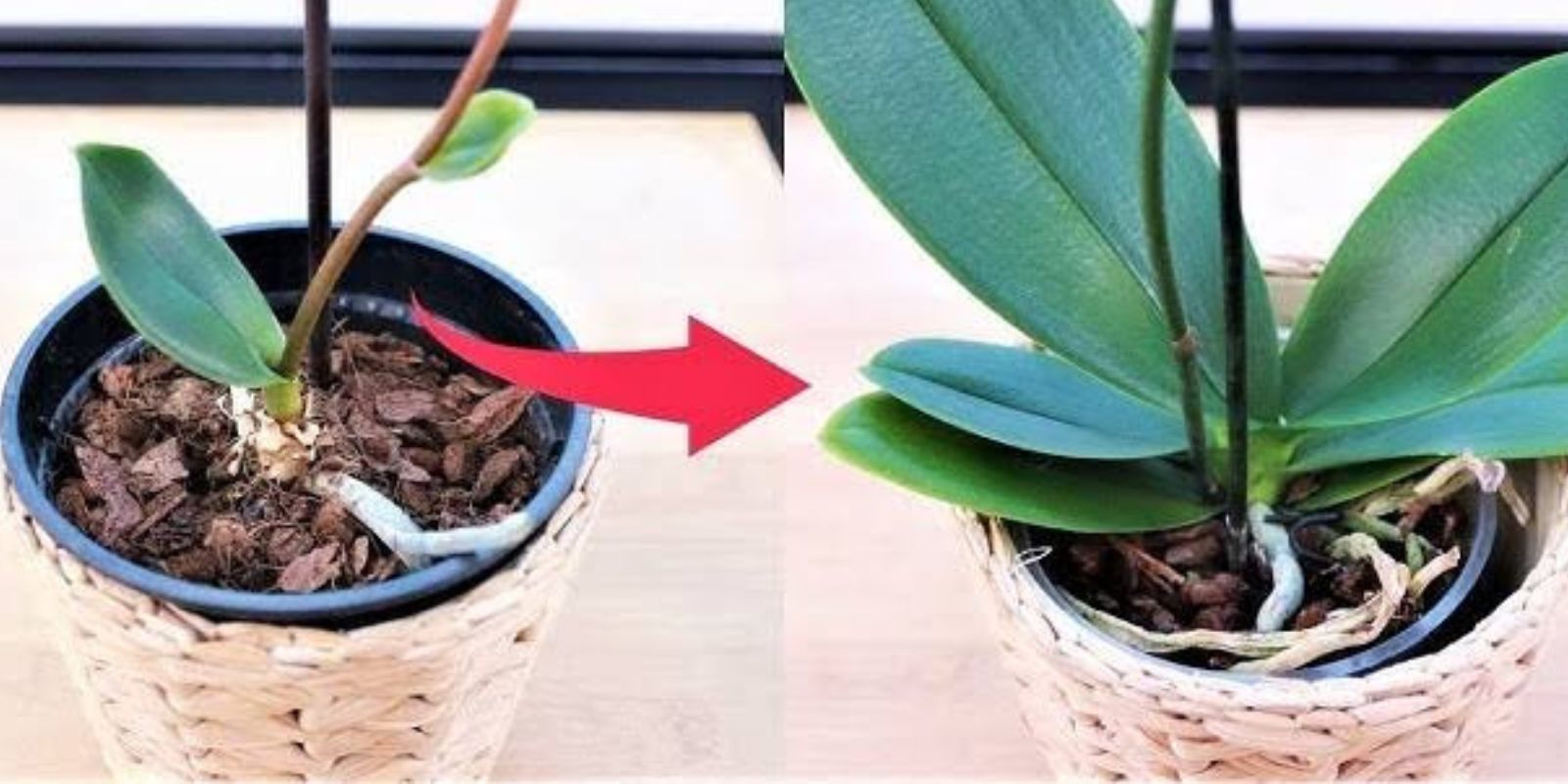Orchids, with their exotic beauty and delicate blooms, are a favorite among plant lovers. However, getting these elegant plants to bloom abundantly and consistently can seem challenging. If you’ve been wondering how to make your orchids flourish, you’re in the right place! This guide will teach you everything you need to know about caring for your orchids and even a clever garlic-based trick to boost growth and promote blooming.
Understanding Orchid Basics: What Do Orchids Need?
Before diving into specific techniques, it’s essential to understand the basics of orchid care. Orchids, native to tropical regions, thrive in specific conditions that mimic their natural habitat. Providing these conditions is the first step toward ensuring healthy growth and blooming.
1. Light
Orchids require bright, indirect light. Direct sunlight can scorch their leaves, while insufficient light will prevent blooming. Place your orchids near an east- or south-facing window with filtered light. If you don’t have access to natural light, consider using grow lights to ensure they get the necessary exposure.
2. Watering
Overwatering is one of the most common mistakes in orchid care. Orchids prefer their roots to be slightly moist but never waterlogged. Use a well-draining orchid potting mix and water only when the top inch feels dry to the touch. Always use lukewarm water and ensure the pot has drainage holes.
3. Humidity
Orchids love humidity, ideally between 50-70%. If your home is dry, you can increase humidity by misting the plants, using a humidifier, or placing the orchid pot on a tray of water with pebbles (ensuring the roots are not submerged).
4. Temperature
Temperature plays a critical role in orchid blooming. Most orchids thrive in temperatures between 20-25°C (68-77°F) during the day and slightly cooler at night. Sudden temperature drops can trigger blooming in some varieties.
5. Fertilizer
Orchids need nutrients to grow and bloom. Use a balanced orchid fertilizer (20-20-20) every two weeks during the growing season. Reduce feeding during the dormant period.
The Garlic Trick: Boost Orchid Growth and Flowering
One of the best-kept secrets for making orchids bloom faster is a simple garlic-based solution. Garlic contains natural compounds that promote root growth, strengthen the plant, and encourage blooming. Follow this step-by-step process to try it yourself:
Step 1: Prepare Garlic Water
- Take one clove of garlic and crush it into small pieces.
- Place the crushed garlic in 300 ml (1.2 cups) of water and let it soak for about 4 hours. This allows the beneficial compounds to infuse into the water.
Step 2: Prepare the Eggshell Container
- Take a clean eggshell and make two small holes at the top. Rinse it thoroughly to remove any residue.
- Fill the eggshell with damp moss soaked in the garlic water.
Step 3: Prepare the Orchid Stem
- Identify a healthy stem on your orchid and cut it at an angle. The angled cut helps the stem absorb nutrients more efficiently.
- Soak the cut stem in the garlic water for 20 minutes. After soaking, pat it dry with a clean cotton cloth.
Step 4: Assemble the Mini Greenhouse
- Place the moss-filled eggshell with the orchid stem inside a small plastic container, such as a cut water bottle.
- Add a small amount of water to maintain humidity and seal the container to create a greenhouse effect.
Step 5: Wait and Watch
- Place the container in a bright location with indirect sunlight. Avoid placing it in direct sunlight, as it can overheat the greenhouse.
- After four weeks, you should notice new roots and leaves emerging.
Aftercare: Transplanting and Long-Term Orchid Health
Once your orchid shows signs of new growth, it’s time to transfer it to a permanent pot. Follow these steps:
- Choose the Right Pot: Use a transparent pot with drainage holes. Transparent pots allow you to monitor root health and ensure the roots receive adequate light.
- Use Orchid Mix: Fill the pot with a specialized orchid potting mix containing bark, moss, or perlite for optimal drainage.
- Repot Gently: Carefully remove the orchid from the eggshell or container, ensuring the roots are not damaged. Place it in the pot and cover the roots with the potting mix.
- Resume Care: Continue to provide proper light, water, and humidity as outlined above.
Common Orchid Problems and Solutions
Even with the best care, orchids can face some challenges. Here are common issues and how to address them:
1. Yellowing Leaves
- Cause: Overwatering or exposure to direct sunlight.
- Solution: Adjust watering frequency and move the plant to a location with filtered light.
2. No Blooms
- Cause: Insufficient light or inconsistent temperatures.
- Solution: Ensure the orchid gets bright, indirect light and experiences a slight drop in temperature at night.
3. Root Rot
- Cause: Waterlogged roots due to poor drainage.
- Solution: Remove the affected roots, repot the plant in fresh orchid mix, and improve drainage.
Benefits of Growing Orchids
- Aesthetic Appeal: Orchids add elegance and beauty to any space with their vibrant blooms and unique shapes.
- Air Purification: Like many houseplants, orchids improve indoor air quality by absorbing carbon dioxide and releasing oxygen.
- Stress Relief: Caring for orchids can be a therapeutic and rewarding experience, reducing stress and promoting mindfulness.
Conclusion: A Blooming Success Awaits
Orchids are undoubtedly one of the most rewarding plants to grow. With proper care and attention, along with the simple garlic trick, you can transform your orchid into a thriving masterpiece that blooms year after year.
What are your favorite tips for orchid care? Share your experience and join the conversation below! 🌸
#BloomingOrchids #GardeningTips #OrchidCare #HouseplantLove #GreenThumb #IndoorPlants #DIYGardening #PlantLovers

